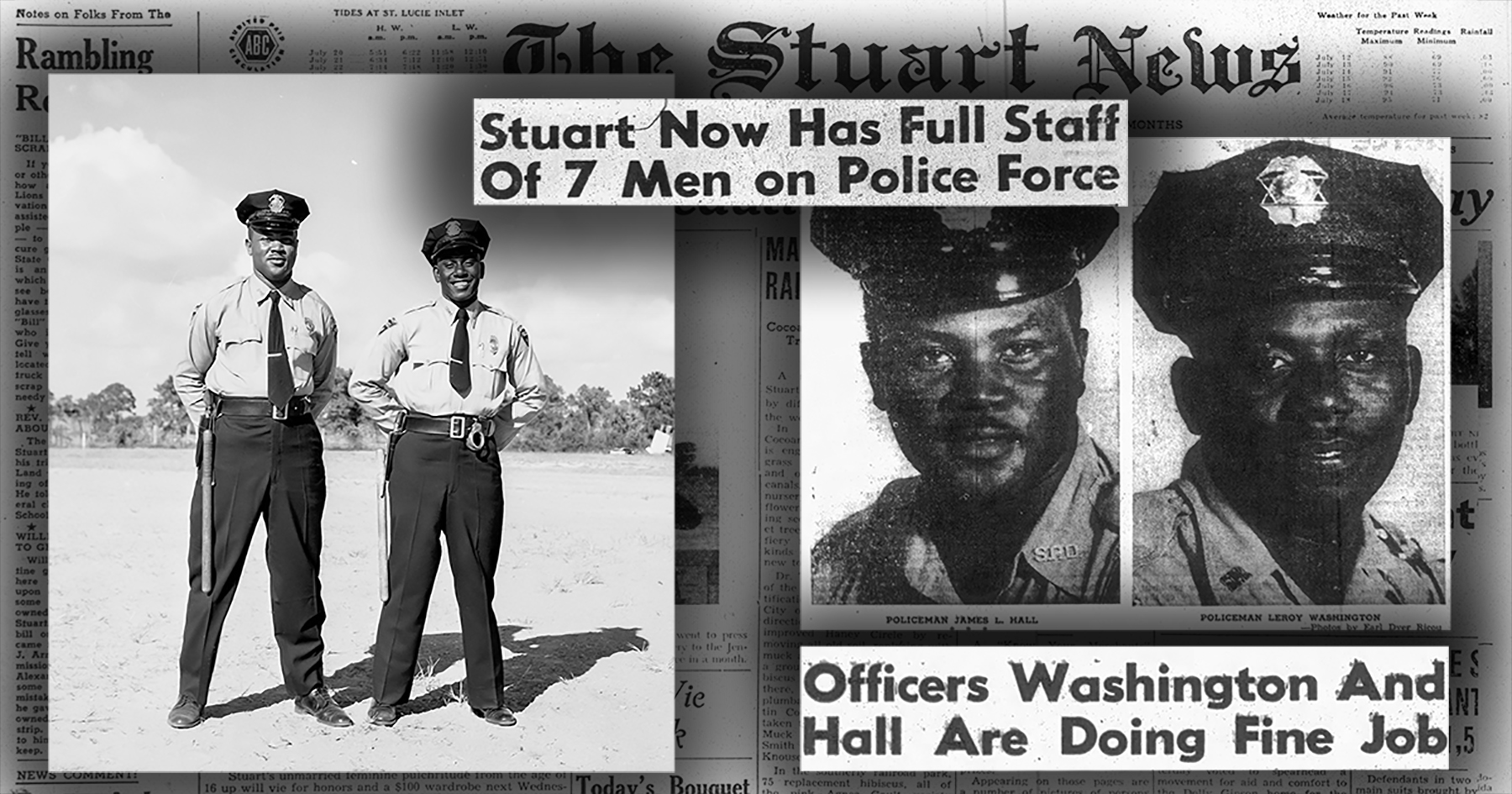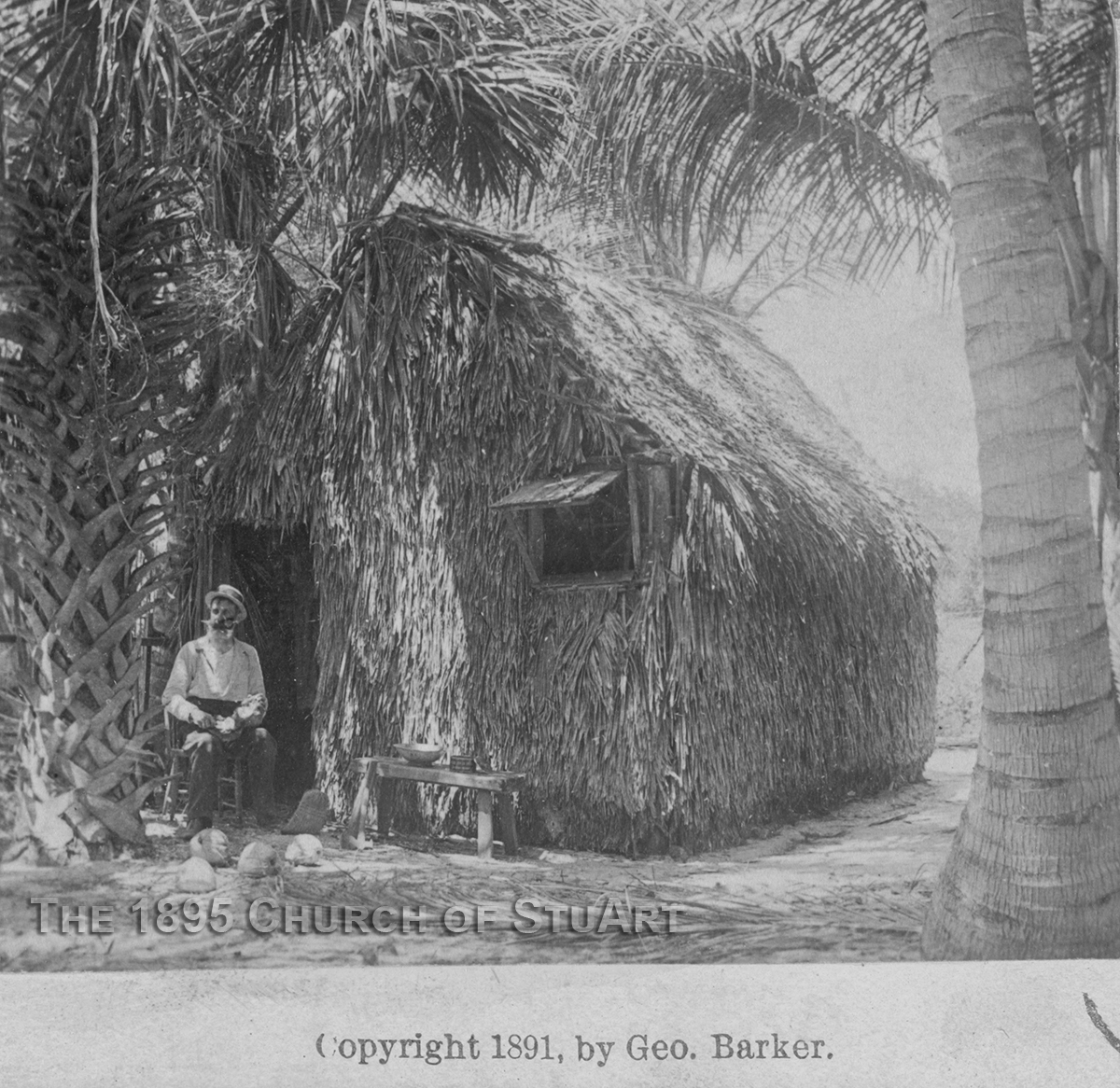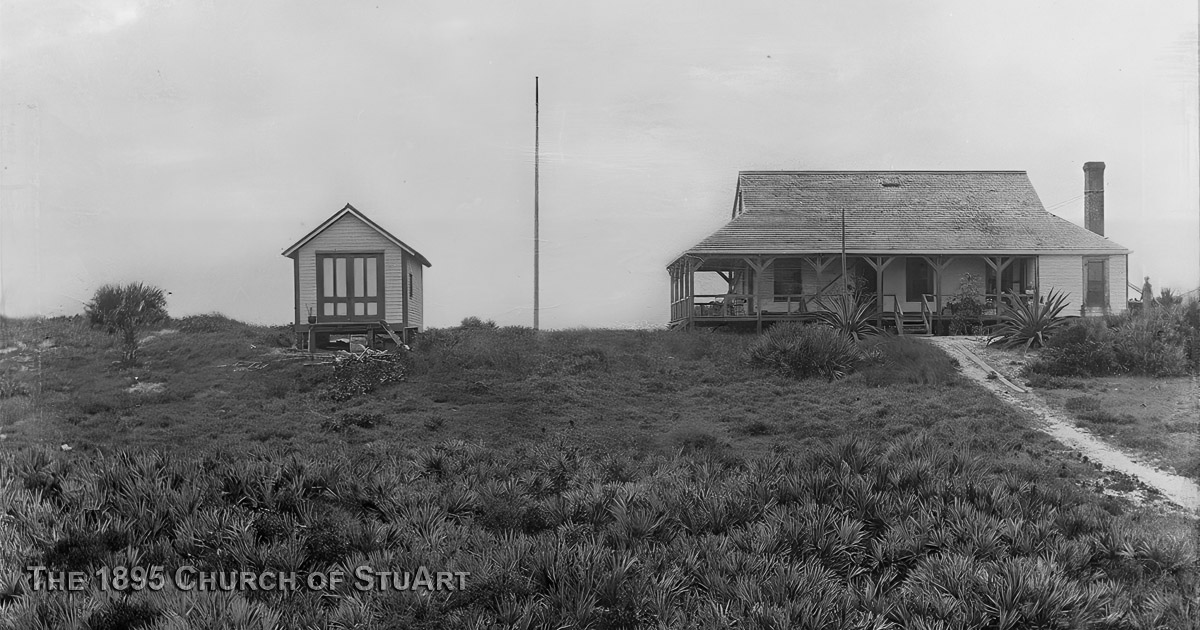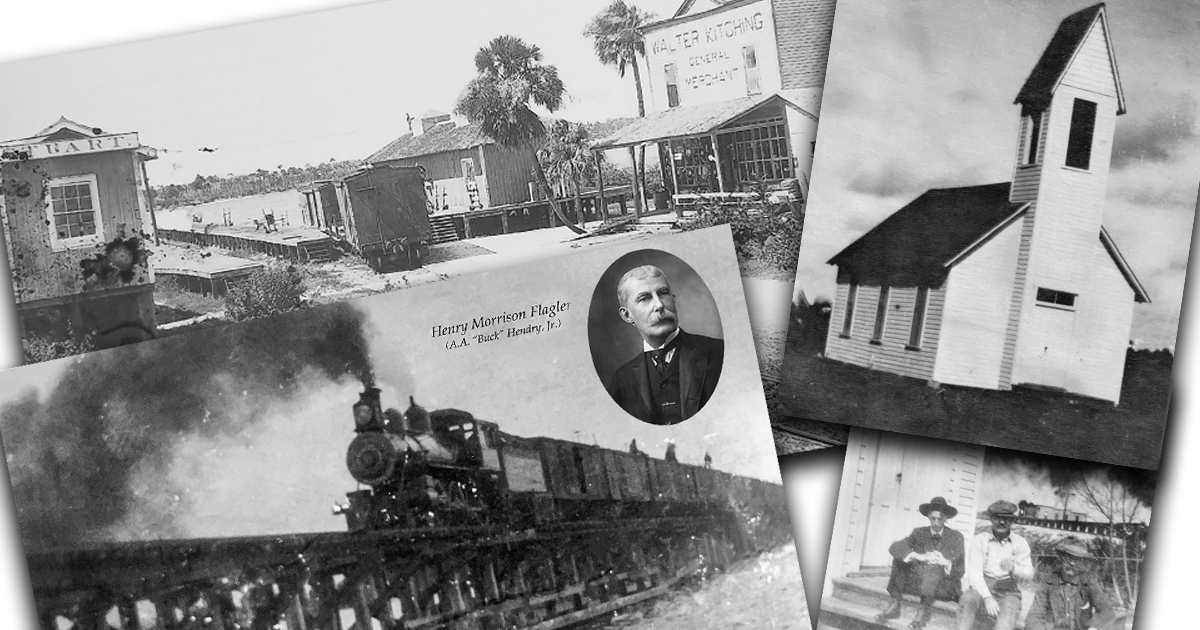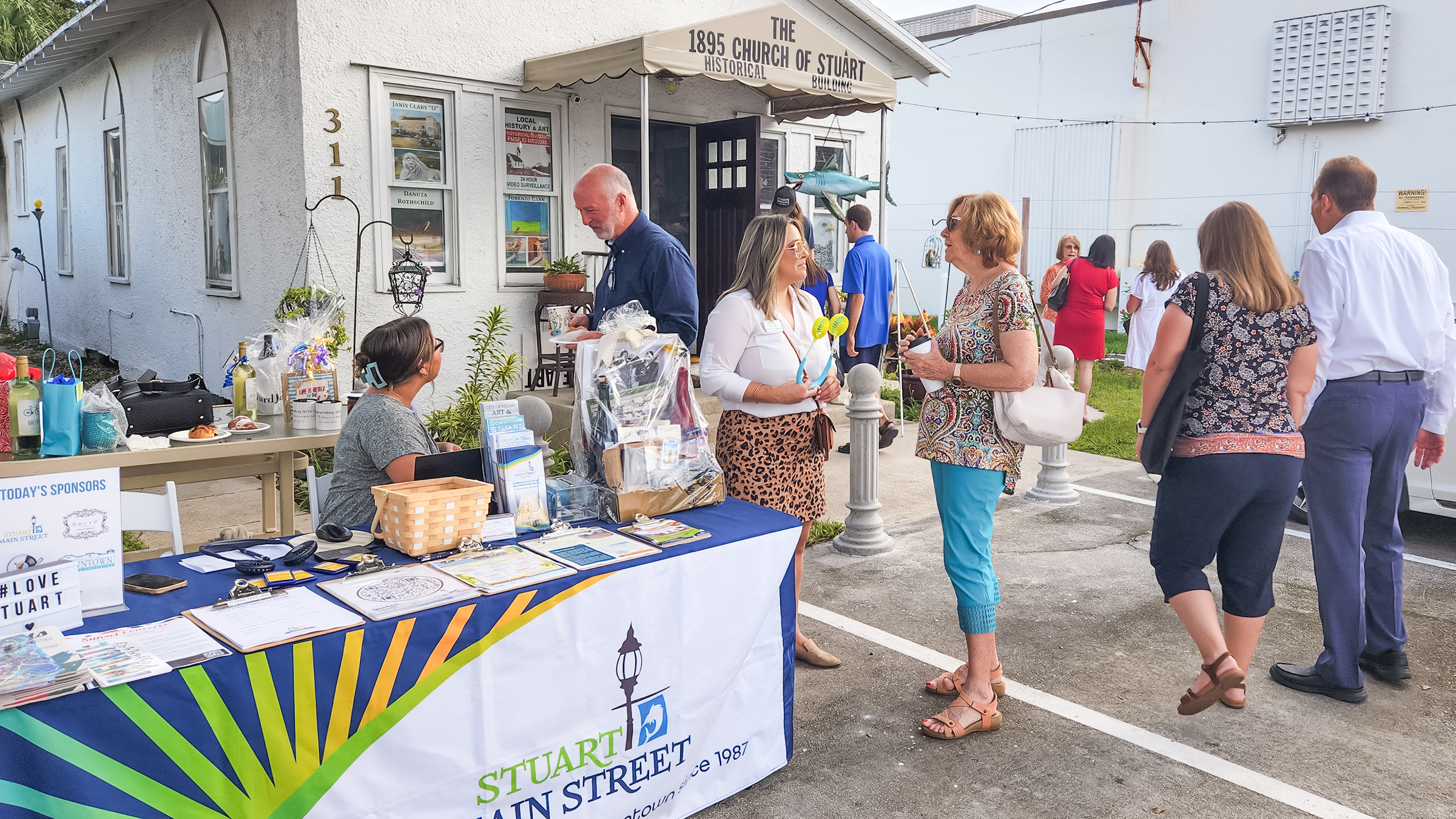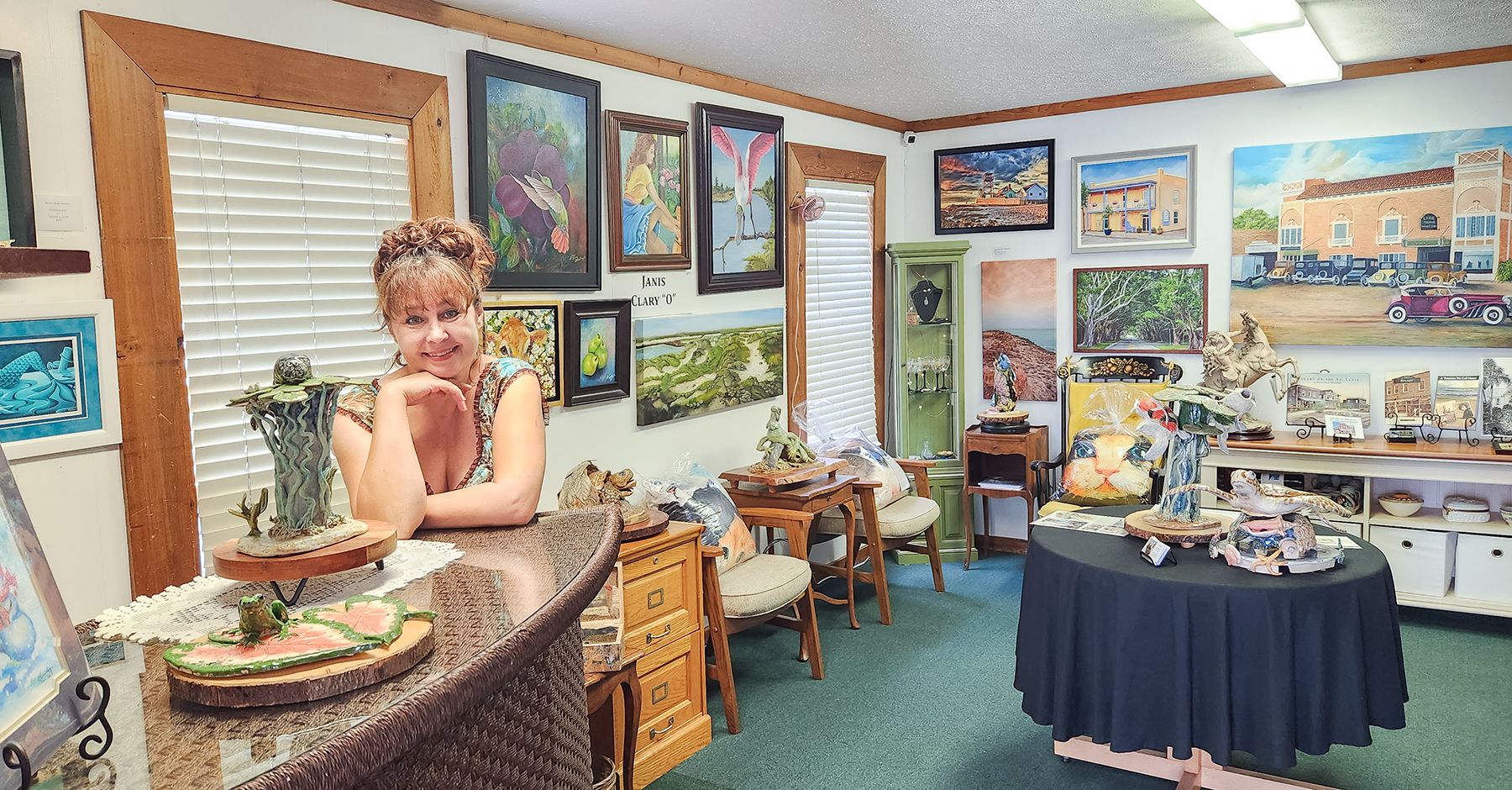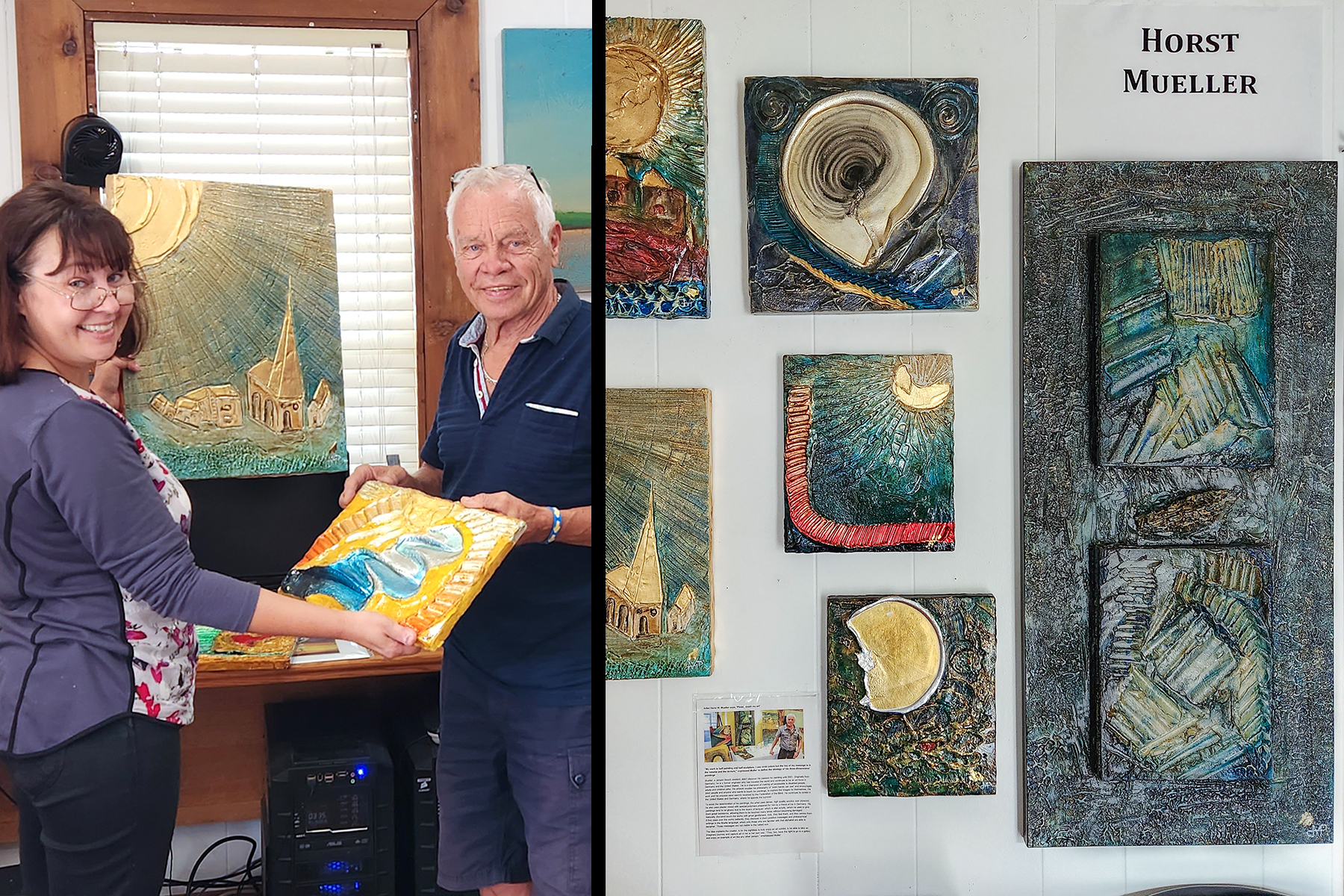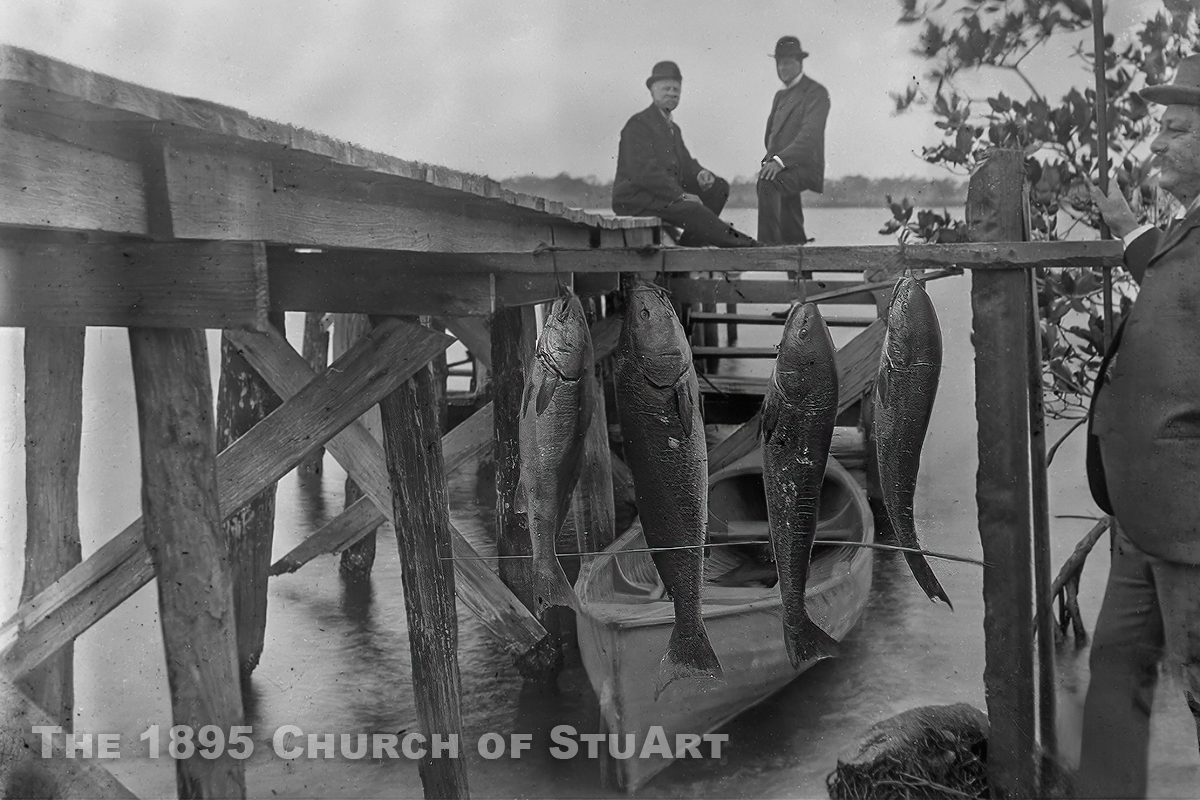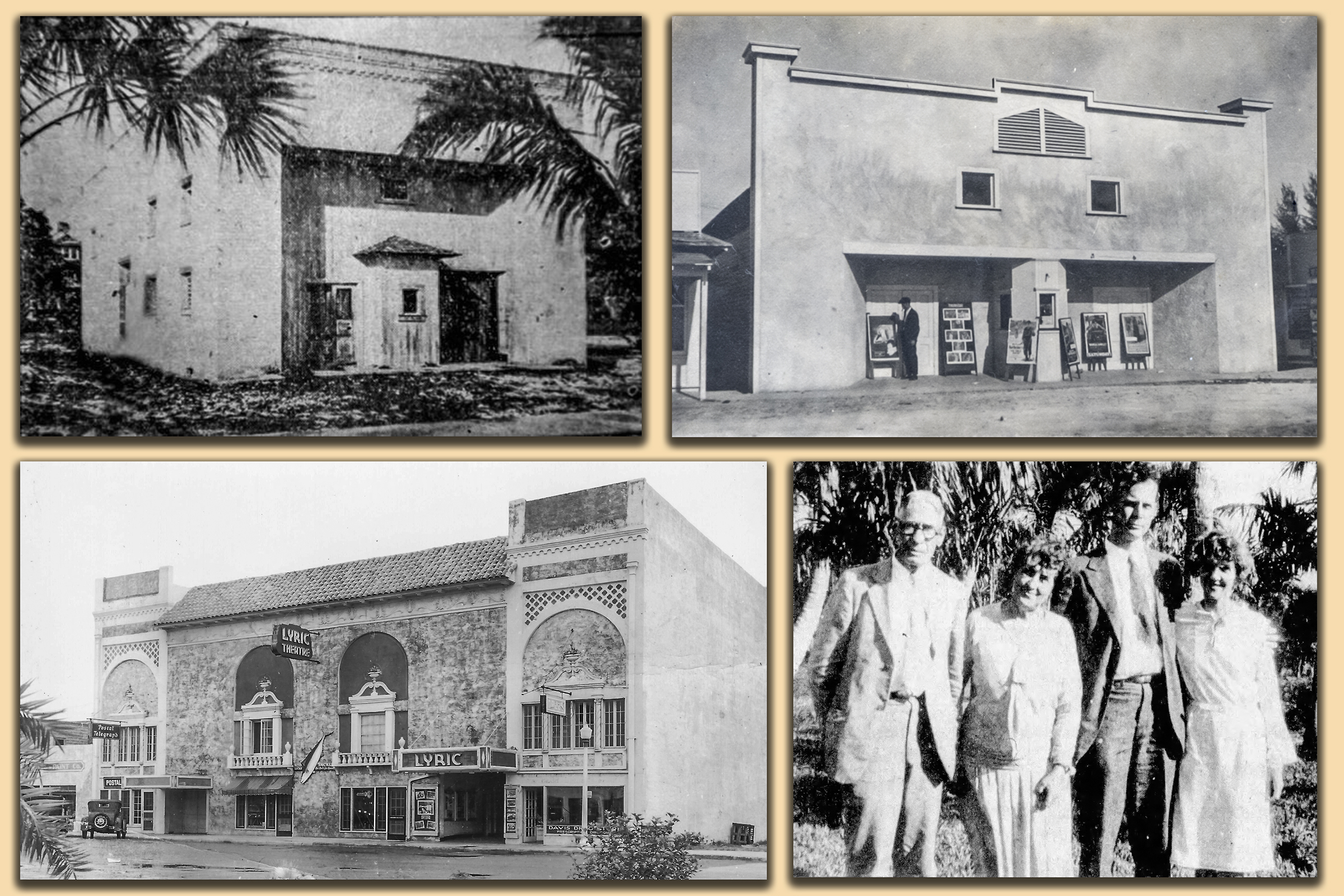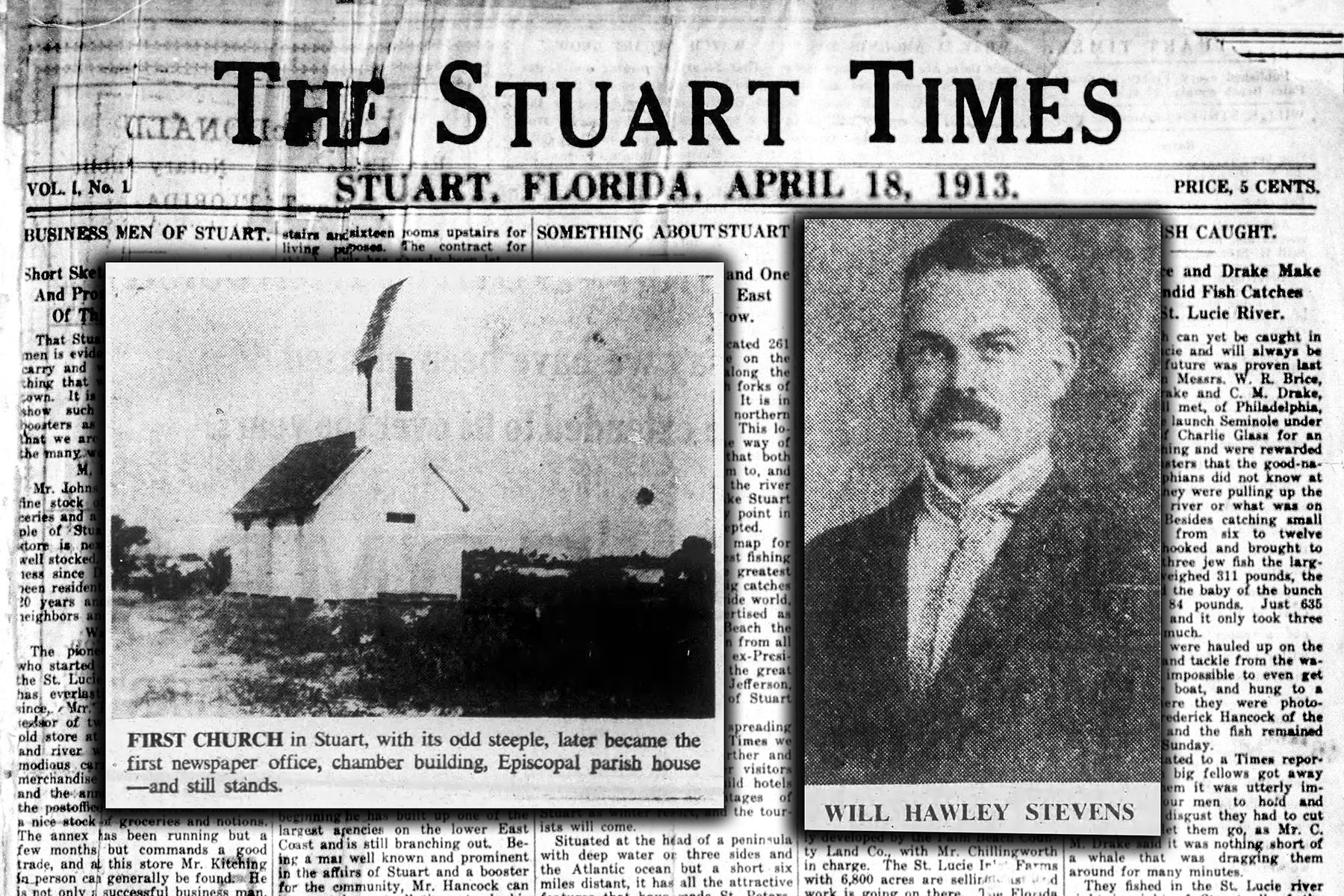The oldest church building located in what is now Martin County, Florida.
Our special Thank You to Alice L. Luckhardt and Sandra Henderson Thurlow.
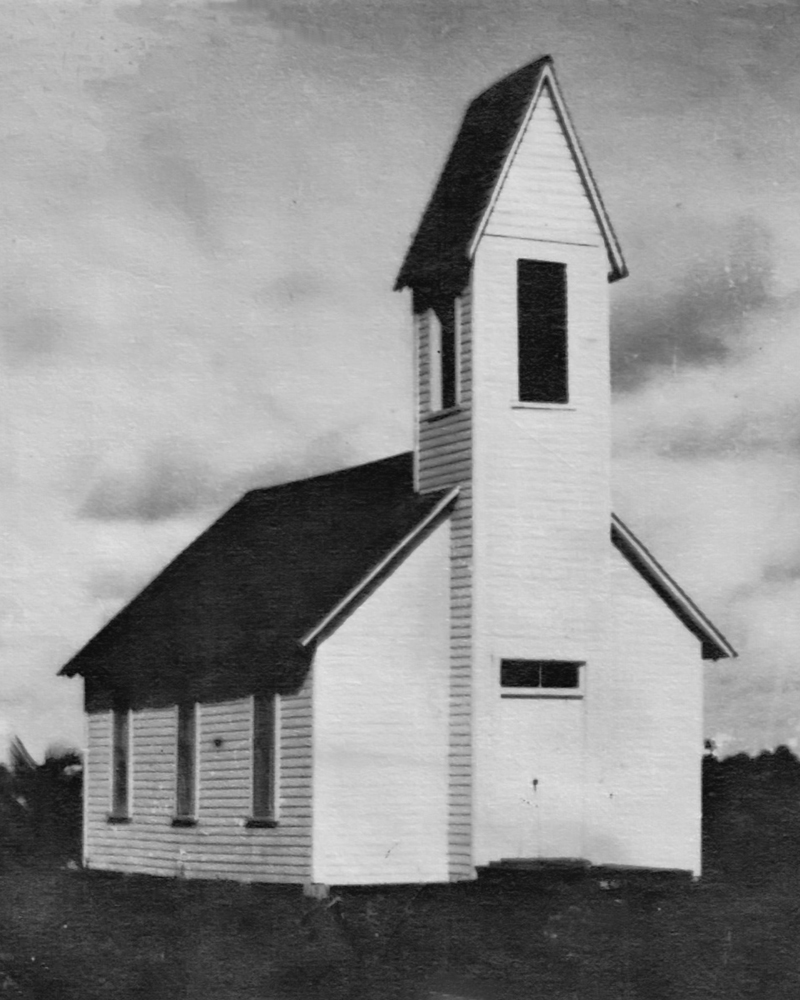
The town’s first church was built by the First Methodist Church in May 1895 with wood supplies sent via a boat from Titusville. Its dedication was June 1895, shortly before Potsdam’s name was changed to Stuart.
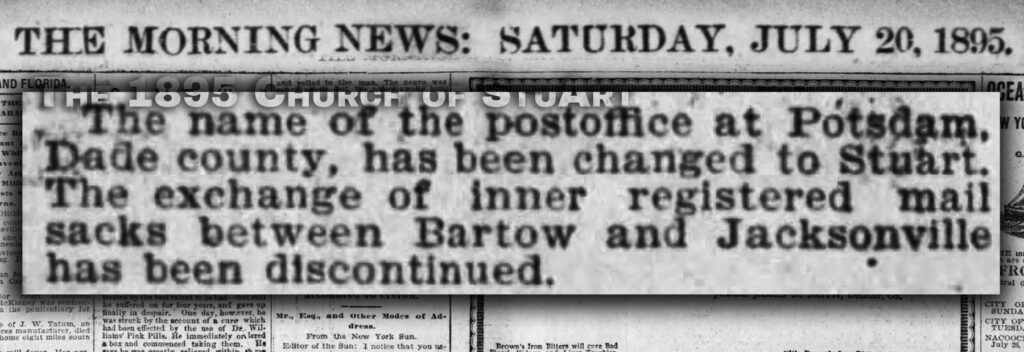
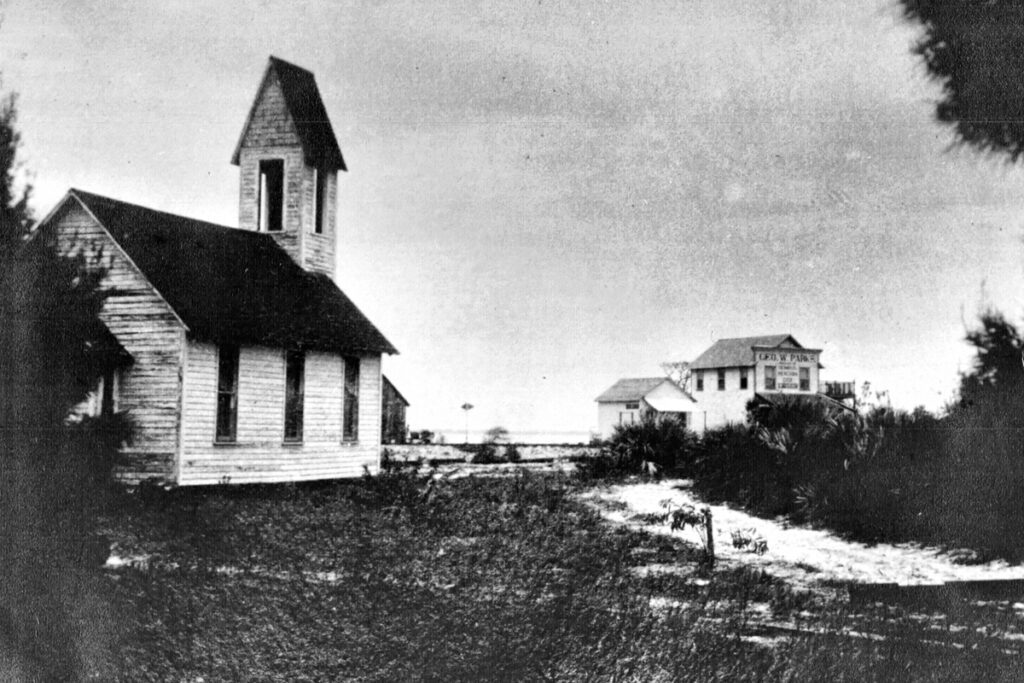
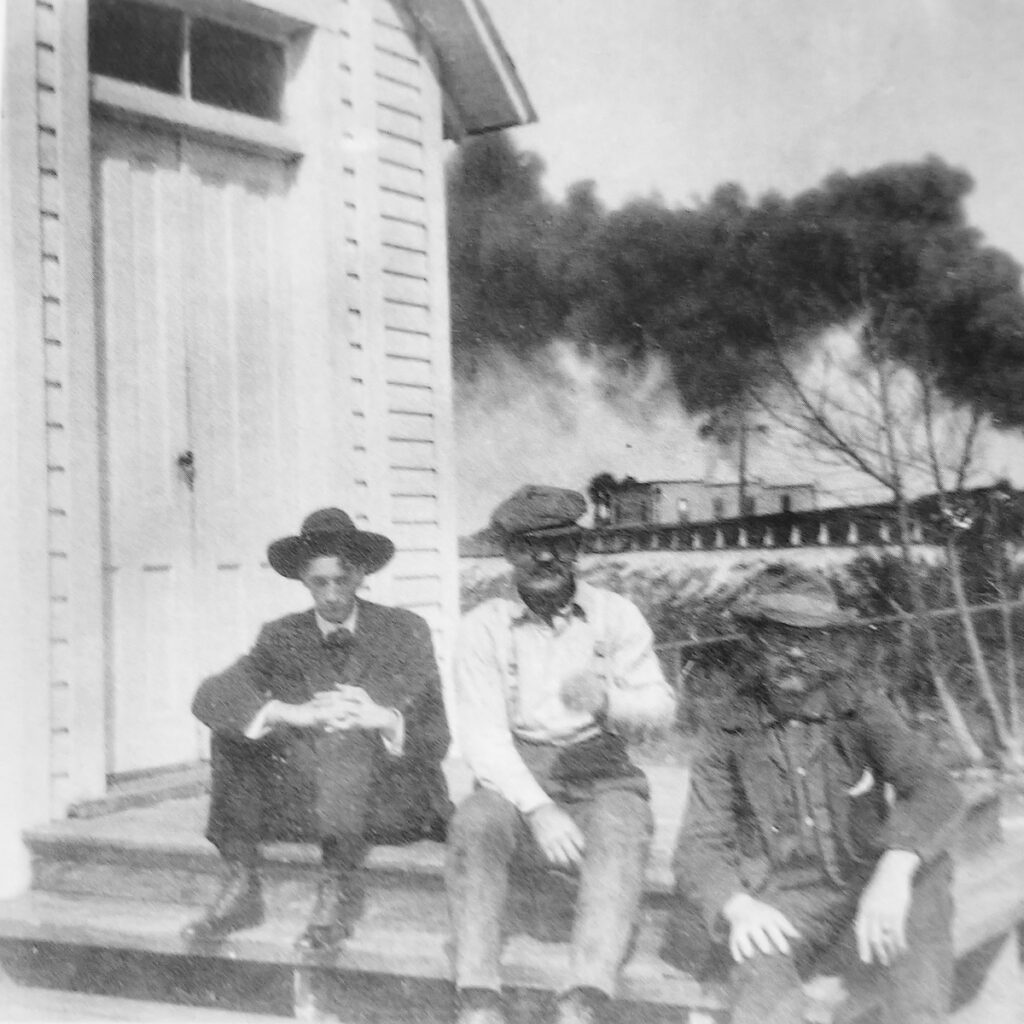
“The location given is now in the middle U.S.1, just after you cross the Roosevelt Bridge going south. This little painted white church and red roof with a tall steeple attracted people from miles around. It was the church for the whole community whatever their denomination, as it was the only church here,” – wrote Mrs. John E. Taylor (Sara Josephine Kitching) in her short memoir on the history of the First United Methodist Church in Stuart, Florida. The church was placed close to the tracks so anyone traveling via the train could see the steeple and know this was a civilized community. Just before 1900 there were 12 members for the Methodist Church.
The seating capacity of the Community Church, also known as The Pioneer Church, is unknown but would have be small in accord with the area’s population. Stuart’s population in 1900 was just under 100 people, and by 1917-1918 it was 1,200.
In 1907, the little first Methodist Church was outgrown, and a new, second, First Methodist Church was started, built on the corner of West 2nd Street and Avenue D (now Albany Avenue).
The first little Methodist church with the red roof was sold, the steeple was removed, and it was used as a residence. Later, the former community church was used by numerous commercial businesses, including a cleaning shop, a real estate office, the first local newspaper office, and the Stuart Chamber of Commerce office.
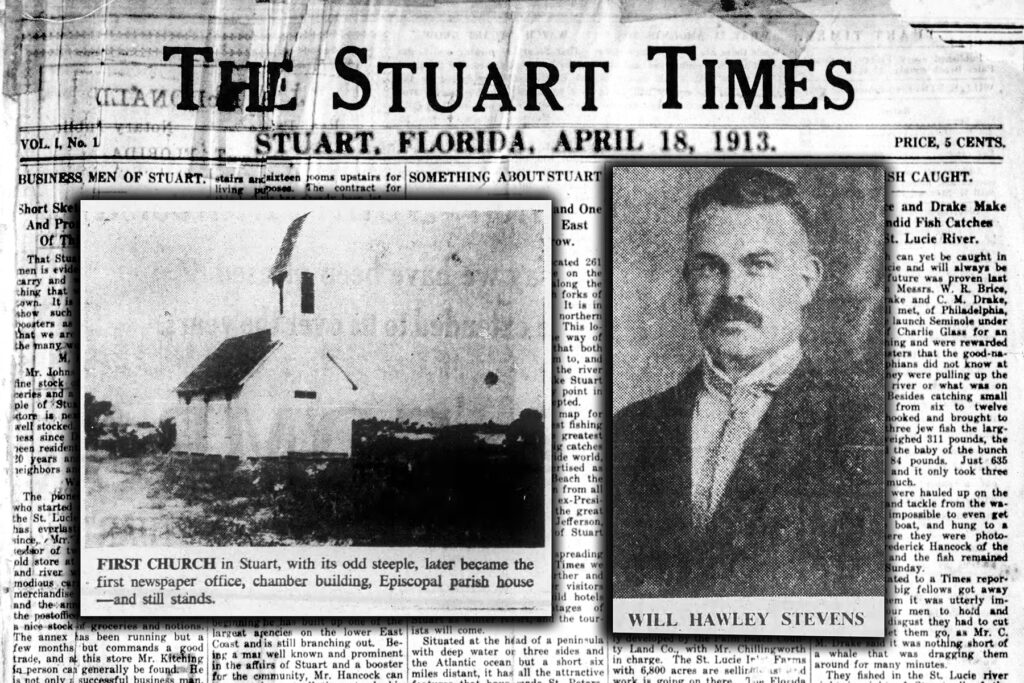
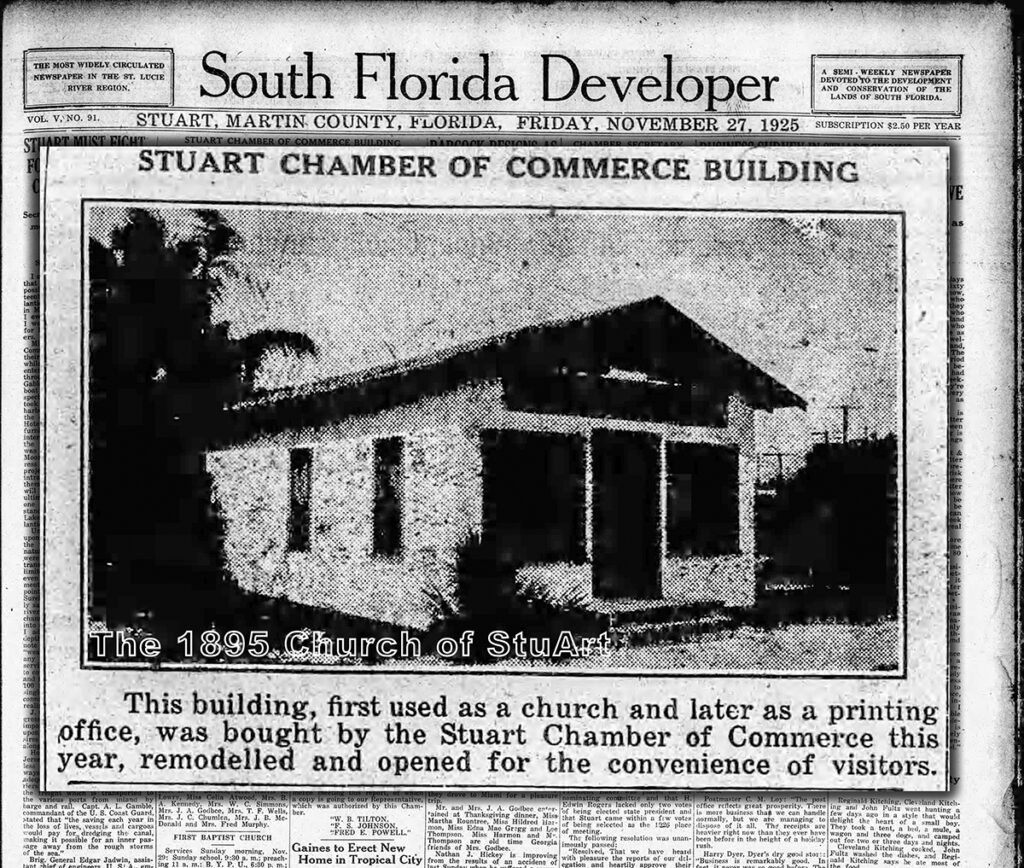
Members of the local Episcopal Church of All Saints (competed in 1898) in Jensen began planning on building a Stuart Episcopal Church in June 1925. They figured it would cost $30,000. Raising the necessary funds took awhile and in the meantime with hurricanes striking Florida including Stuart, banks closing and investment money not available, the hope of a church vanished.
A major move and transformation occurred in 1930 when a new reorganized Stuart Episcopal congregation still in need of a building looked at the former Community Church. This now deserted 1895 church was purchased for $300 by the congregation and moved in the summer 1930 to two donated lots (from Stanley Kitching and John Charles Hancock) on West 3rd Street and then renovated by the church members.
Men with nails, hammers, saws, lumber and paint have been rushing about in an effort to transform the little building into an Episcopal church. This included removing the tall original steeple. They enlarged and improved the building with special wooden trim ‘arches’ made to adorn the outside windows and a Sunday School addition was built onto the original structure.
Squads of ladies armed with pins, needles and sundry materials have taken up their “residence,” with grim determination to have everything ready. No one could imagine what the united effort of those loyal and gallant church members could produce without a peek inside the now completed edifice. The little building was now not as small as it may look from the outside. It had a comfortable seating capacity for 85 people not including the choir of about 10 persons.
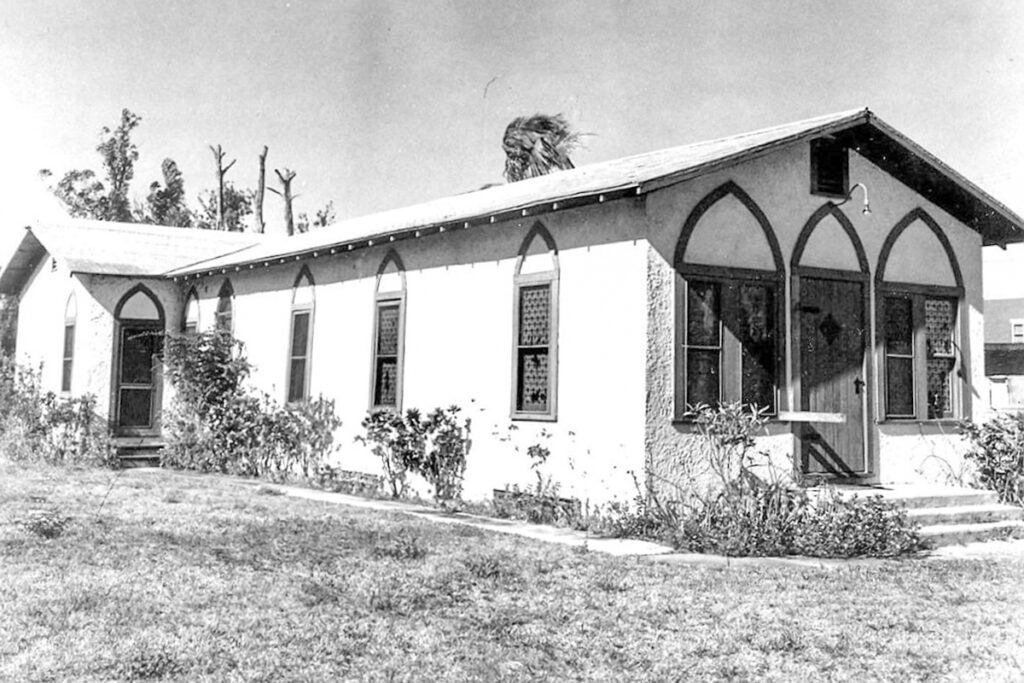
In January 1932, the building was ready for service, dedicated and named St. Mary’s Episcopal Church. Over the years the church was able to seat 120 people.
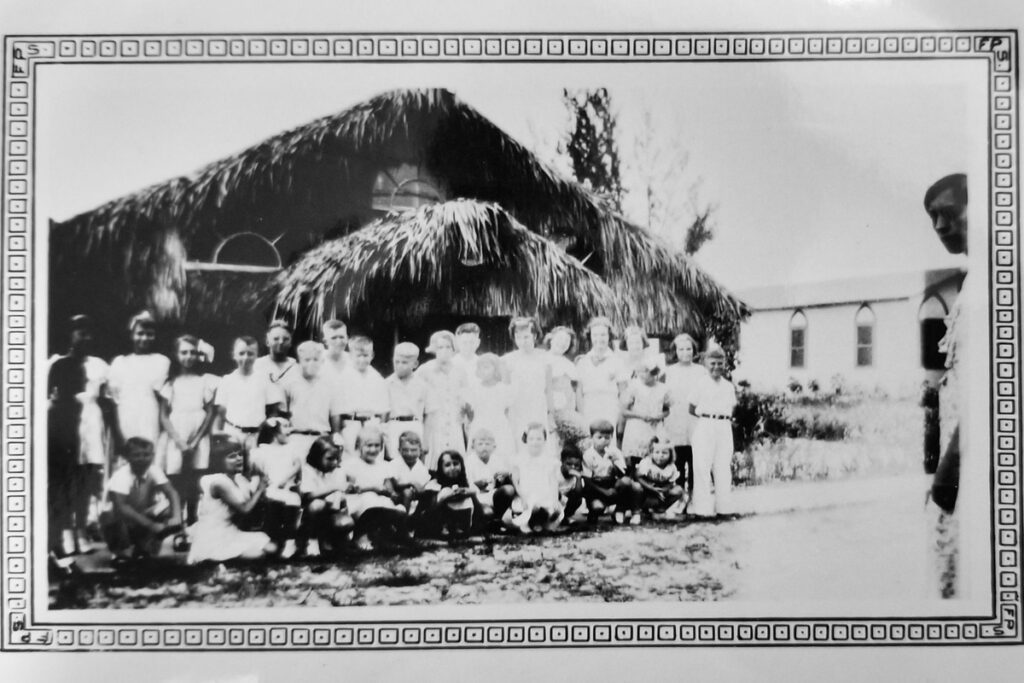
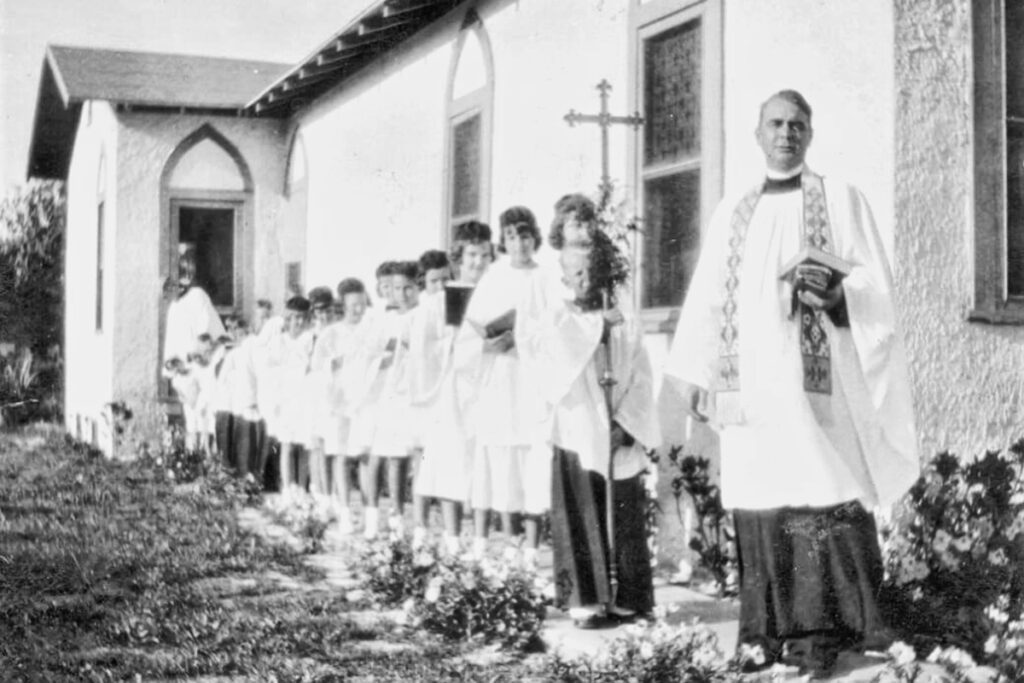
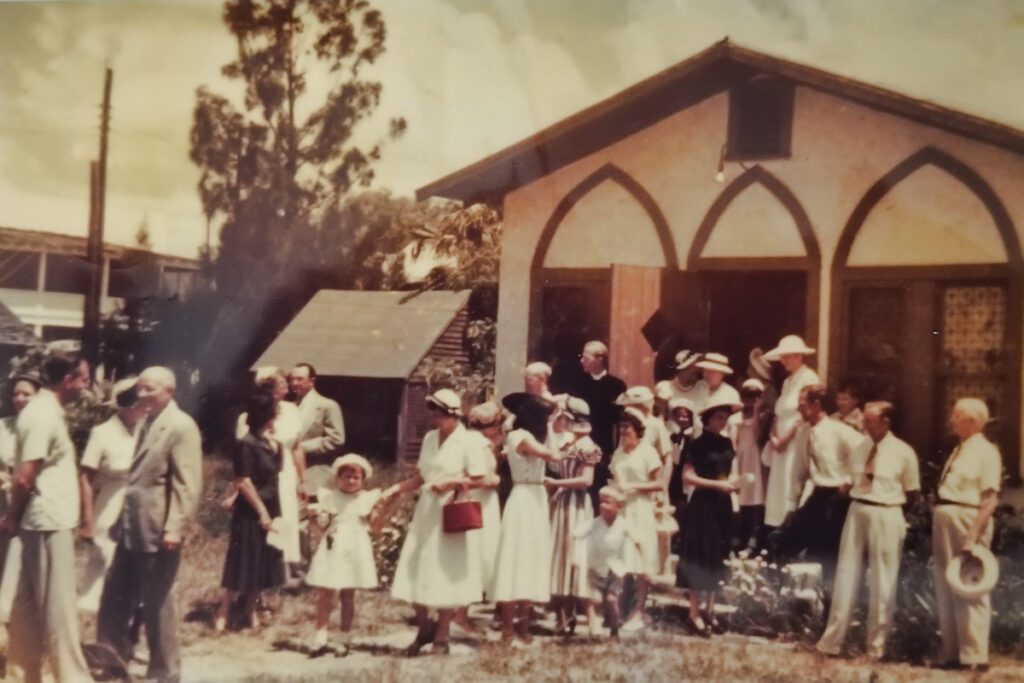
St. Mary’s Episcopal Church grew and became a popular church in Stuart. Eventually, they needed a larger church. At Hospital Avenue and 4th St. (later known as East Ocean Blvd) they built in 1949-1950 a new church. They figured the old church would be moved later next to the new church to be used for Sunday School and the 3rd Street lots would be offered for sale. This did not happen, instead it remained the church’s parish house for a few years. By June 1953 St. Mary’s Episcopal Church instead had constructed a new cloister room, three Sunday School rooms and a kitchen, connected to the main church by a breezeway.
In 1951, the Methodist bought this property including the little church, and it was back home again with its original owners. At this same time it was moved over several feet to the south east to make room for their parsonage. The first church was then used as their Methodist Youth center. All this property was sold in January of 1961, and the building was on it’s second lap as a business building: a fruit store, DEI Development Engineering, and Martin County Probation.
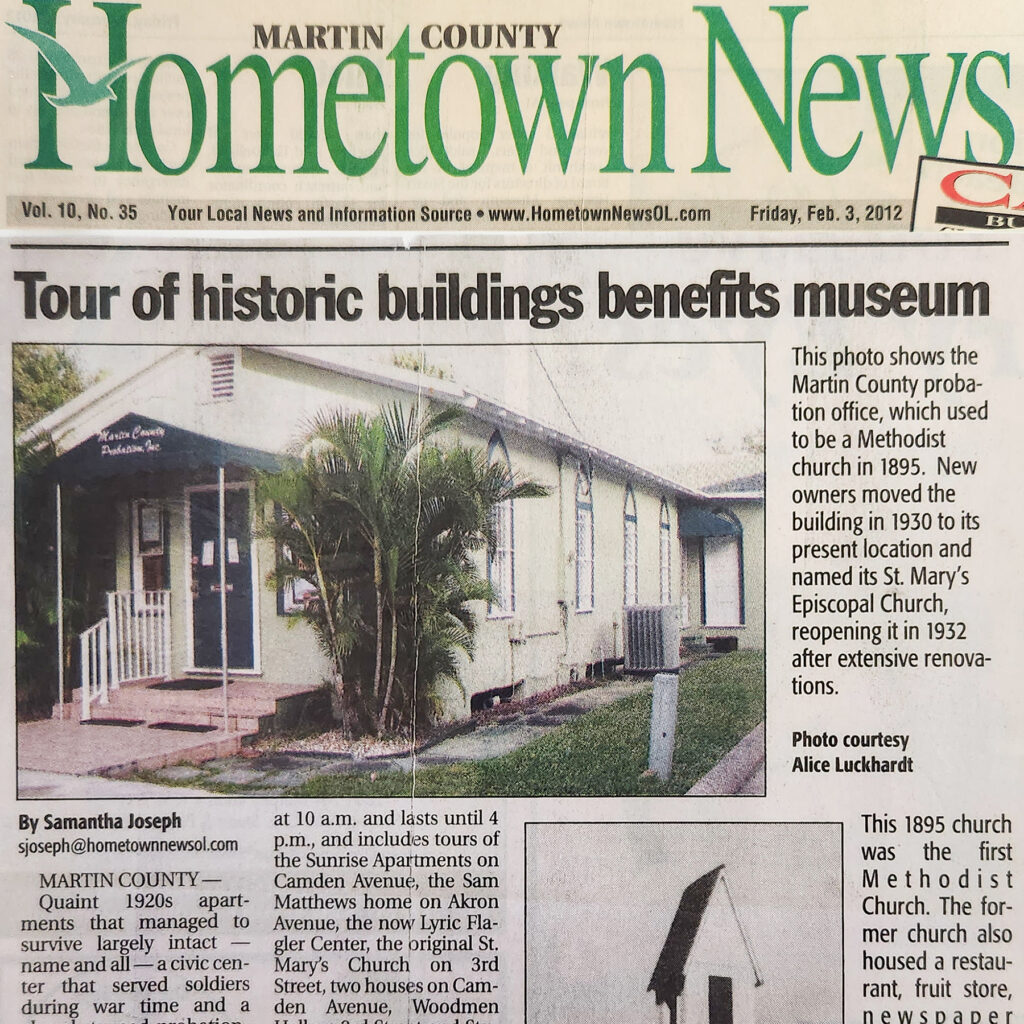
The 1895 church building, constructed over a hundred and twenty eight years ago, was made of good solid materials. Portions of the building are made of nearly indestructible Dade County pine.
In June of 2019, Olga Hamilton and Robert W. Hamilton, Jr. bought the historical building of the first community church. Their mission is to maintain and preserve the building, and, hopefully, restore the steeple. Visit us on Facebook – The 1895 Church of StuArt.
We greatly appreciate your help!
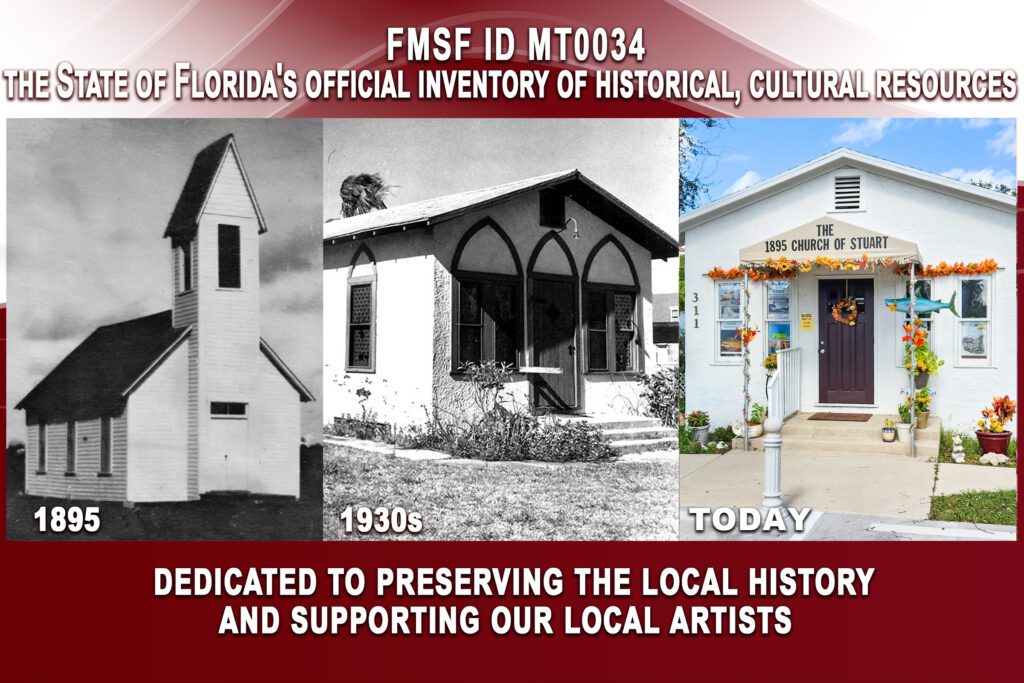
Visit Us! Contact Olga Hamilton for open hours: E-Mail olgahamiltonfineart@gmail.com, leave a phone message (772) 708-2968
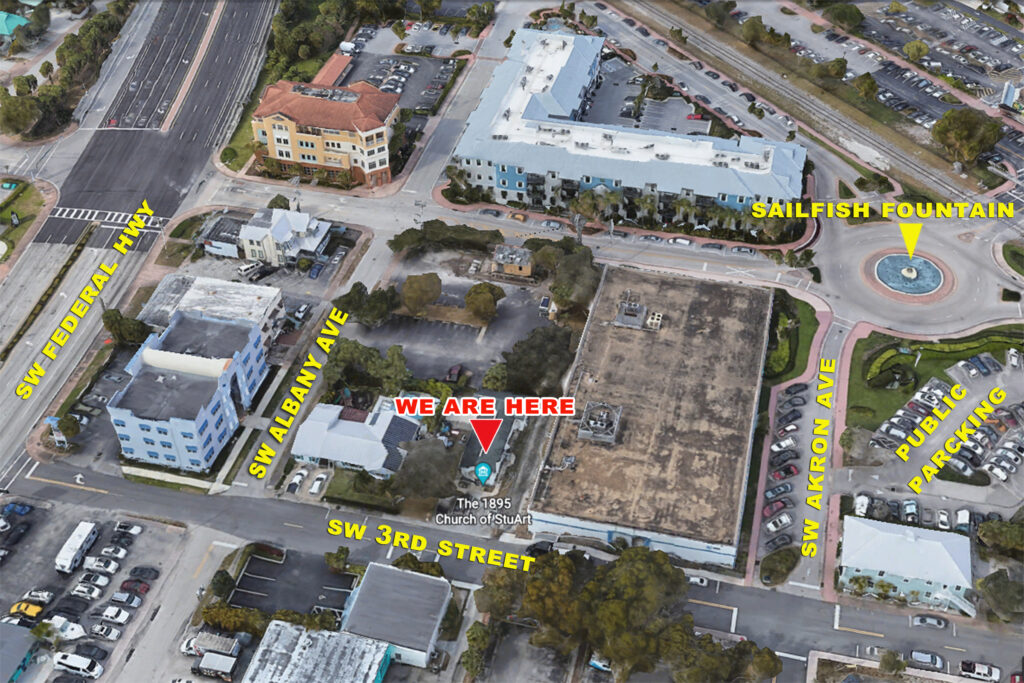
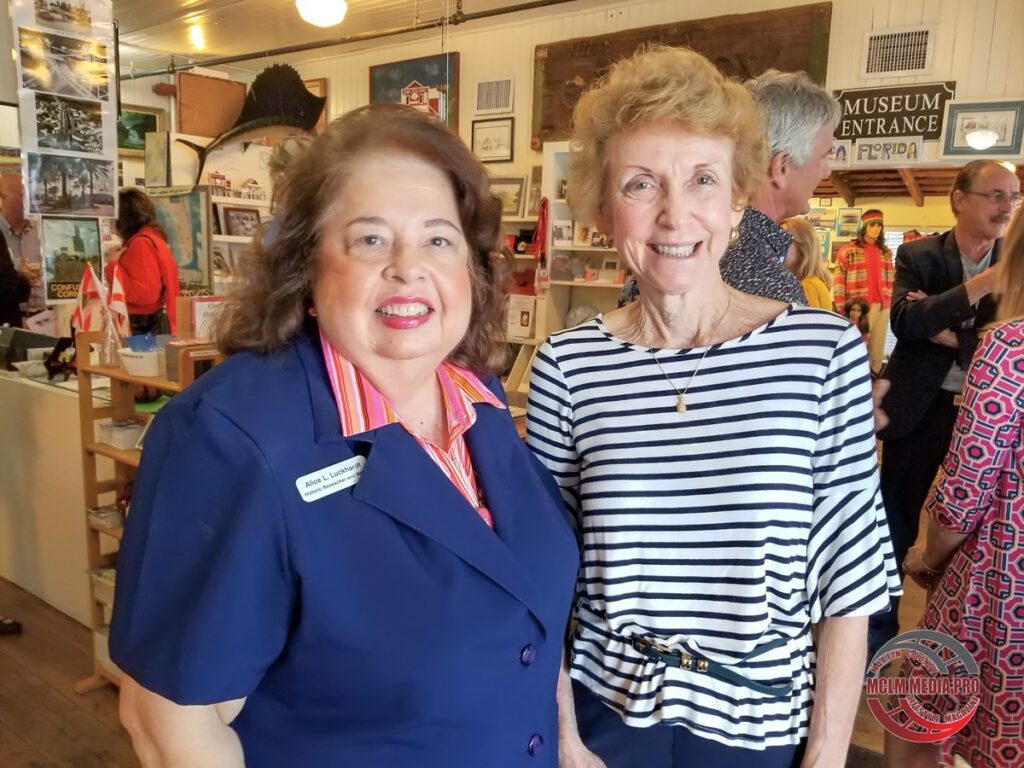
Photo: Alice L. Luckhardt and Sandra Henderson Thurlow at the Stuart Heritage Museum. Their books are available at the Museum’s gift shop.
Alice L. Luckhardt, a native Floridian, historian, and genealogist, collected and compiled rare photographs with interesting stories that document the life and times of Stuart’s early residents. These efforts, which include images from the archives of the Stuart Heritage Museum, Elliott Museum, and vast private collections, preserve a permanent legacy to these industrious and daring pioneers. The book ‘Images of America: Stuart’ by Alice L. Luckhardt contains over 200 vintage photographs, highlighting old landmarks, including the Stuart welcome sign and the St. Lucie River Yacht Club, along with snapshots of Osceola Avenue and more. Copies of the “Stuart” book by Alice L. Luckhardt are available at the Stuart Heritage Museum, and all sales benefit the non-profit museum. Having been diagnosed with cancer in June 2022, she bravely succumbed to the disease, December 4, 2022, at age 72.
Sandra Henderson Thurlow has devoted thirty years to researching, collecting and sharing local history. Her three coffee-table-style books, Sewall’s Point: The History of a Peninsular Community on Florida’s Treasure Coast, first published in 1992 and republished in 2007, Stuart on the St. Lucie, published in 2002, and Historic Jensen and Eden on Florida’s Indian River, published in 2004, showcase photographs collected from pioneer families and community leaders. Sandra’s fourth book, Gilbert’s Bar House of Refuge ─ Home of History published in collaboration with her daughter-in-law, Deanna Thurlow, was completed in March 2020. The entire proceeds from book, which chronicles the history of Martin County’s oldest and most historic building, benefit the Historical Society of Martin County.
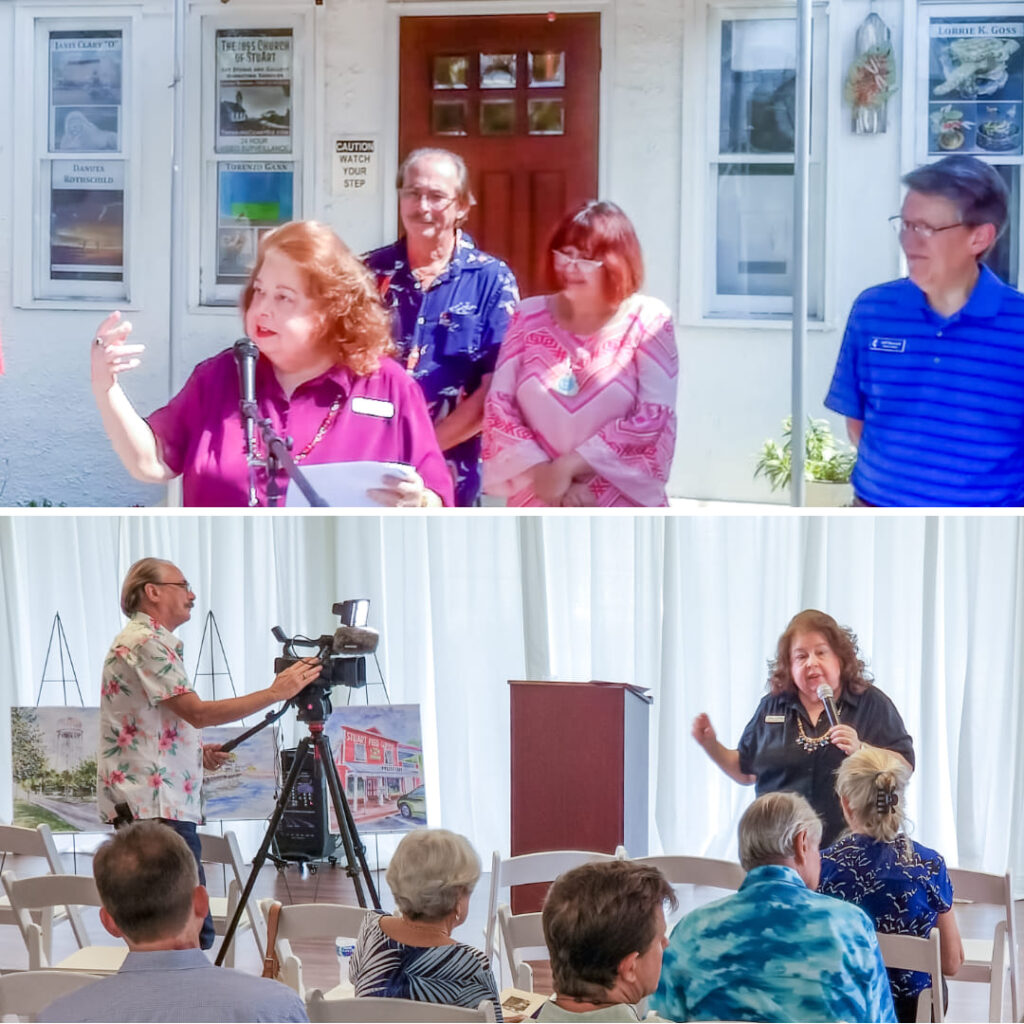
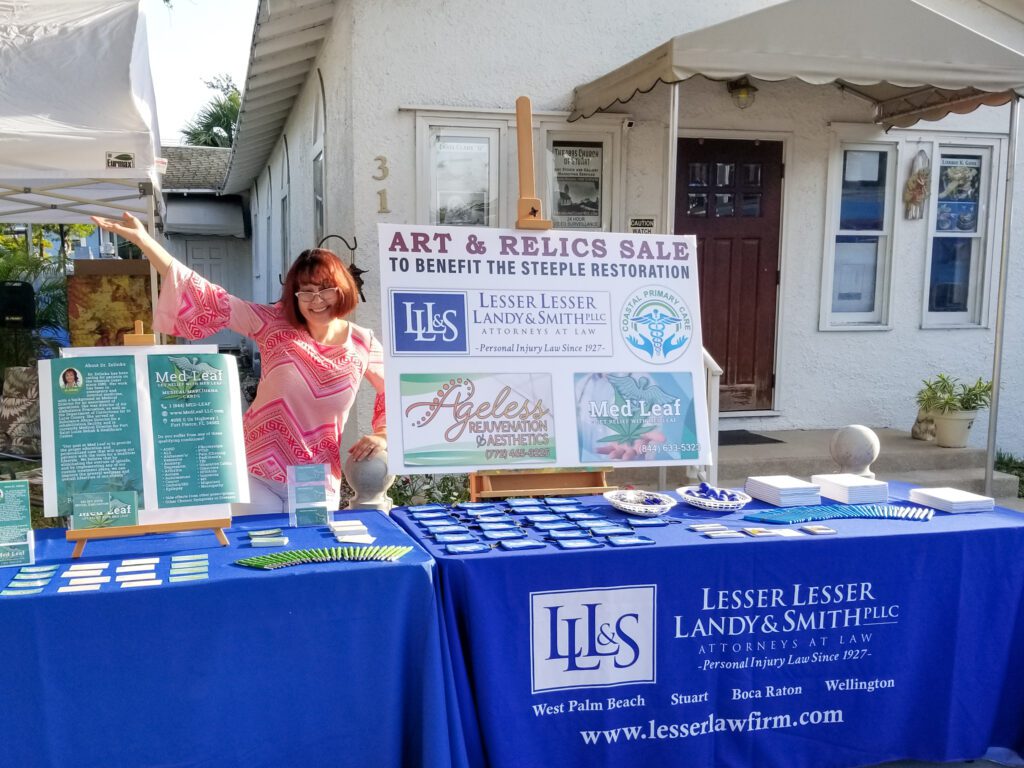
Do not miss our Holiday Fine Art Sale: Supporting Local History and Art!

